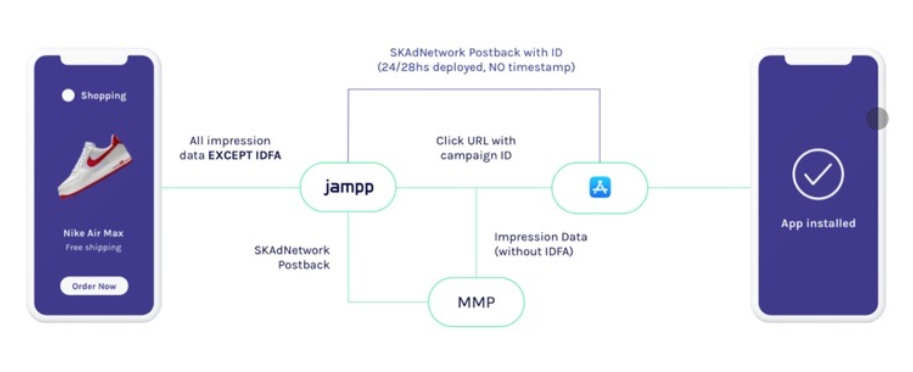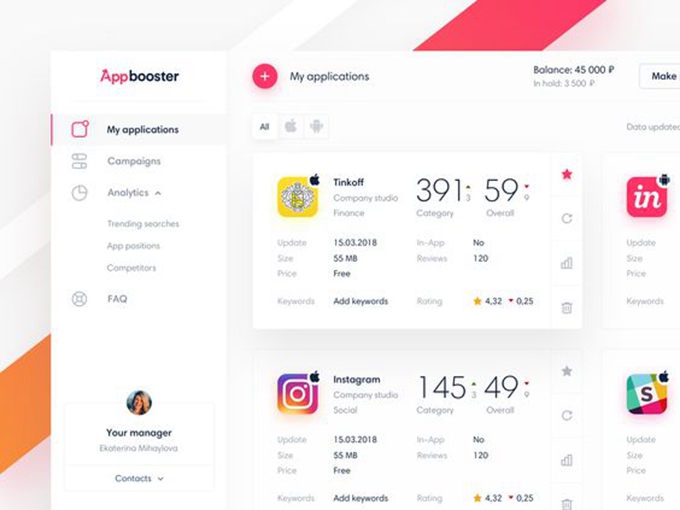Table of Contents
-
- IDFA vs SKAd: everything you need to know
- buy app installs
- buy app reviews
- aso google play
Are app entrepreneurs prepared for Apple’s ATT? IDFA vs SKAd: every little thing you have to know.
We just lately carried out a quiz to check entrepreneurs on SKAdNetwork, and solely 11% of respondents managed to reply accurately. With that in thoughts, we determined to revisit some primary ideas to make clear the highest FAQs round Apple’s new privateness coverage.
What’s the distinction between IDFA and SKAd attribution?
There are literally many variations between these two attribution strategies, however the primary differentiator is expounded to the consumer habits information at our disposal and what will be tracked with it.
- IDFA attribution means 1 to 1 matching and full deterministic granularity on marketing campaign variables: creatives, placements, audiences, and extra. That’s to say, IDFA attribution permits us to match distinctive customers to particular occasions and offers the instruments for behavioral focusing on, granular LTV measurement, and extra.
- SKAdNetwork attribution means we can’t join a selected set up to a consumer. Due to this fact, we can’t hint the impression/click on that generated it, moderately we will join it to a gaggle of impressions/clicks inside a singular ID, functioning as a “cluster” of customers or variables.
How IDFA attribution works

- A consumer clicks on an advert served by a DSP or an advert community. This advert tracks a number of marketing campaign variables, together with: the inventive, placement, viewers, and geo, amongst others.
- The MMP data the IDFA information related to the marketed app on the time of the impression or click on.
- The consumer goes to the app retailer and installs the app.
- The MMP receives an set up postback in actual time, matches it with the recorded IDFA information for that app, and attributes the conversion to the DSP or the AdNetwork that served the advert.
- The MMP forwards the set up postback with the consumer’s IDFA and granular conversion information to the DSP or the AdNetwork.
How SKAdNetwork Attribution works

- A consumer clicks on an advert served by a DSP or an AdNetwork. This advert tracks an ID with as much as 100 values beforehand specified by the advertiser. The ID can be utilized to code any marketing campaign datapoint comparable to marketing campaign, inventive, and placement.
- After clicking on the advert, the consumer is led to the app retailer and installs the app.
- When the set up takes place, a 24-hour timer begins. Inside these 24 hours, if the consumer conducts one other motion that updates the SKAdNetwork Conversion Worth (comparable to registering on the app or making a purchase order) the timer will reset for an additional 24 hours.
- As soon as there aren’t any extra updates of the Conversion Worth on the app for twenty-four hours, a postback is distributed to the DSP. Be aware that this postback will not be despatched on the spot as soon as the timer stops, however between 0 – 24 hours later.
- The DSP forwards the postback to the MMP with the impression information however no IDFA or user-level information.
IDFA vs SKAd postbacks
Right here’s a better take a look at how these adjustments are mirrored on the postback itself:
The IDFA postback contains:
> Machine ID (IDFA)
> Transaction ID from the impression or click on that generated the attribution (click on or set up)
> Further gadget information: consumer agent, IP handle, geolocation, OS model, and so forth.
The SKAdNetwork postback contains:
> SKAdNetwork Marketing campaign ID (restricted to 100 variables)
> Writer App Title / Bundle ID (provided that Apple’s hidden privateness thresholds are met)
> Conversion Worth (optionally and provided that Apple’s hidden privateness thresholds are met)
What’s a conversion worth? Why is it so essential?
Within the SKAdNetwork framework, a conversion worth data information concerning the consumer habits after the set up. This data will be included within the SKAdNetwork set up postback and despatched to the DSP or advert community chargeable for the set up. The conversion worth itself is a single quantity between 0 and 63 outlined by the advertiser.
These values will be set as much as present insights into marketing campaign efficiency relating to ROI, consumer retention, and habits, serving to entrepreneurs reply questions like:
- What number of purchases have been carried out by this cluster of customers?
- What number of instances did they open the app?
- How a lot cash did they spend on the app?
Get your conversion values proper
Everybody’s saying “take a look at SKAdNetwork now”—and that’s precisely what app entrepreneurs needs to be doing.
At Jampp, we advise entrepreneurs to maintain it easy and begin working with their DSP companions to map out your conversion values. That is the quickest option to begin getting the postbacks and iterate primarily based on outcomes.
Shifting ahead: adjustments in SKAdNetwork 3.0
We began this journey with SKAdNetwork 2.0, however Apple continues to be engaged on updates for this framework. SKAdNetwork 2.2 brings key adjustments like View-through Attribution (VTA)—and there’s extra to return: SKAdNetwork 3.0, which is able to embrace a “did-win” parameter, has been introduced. As iOS 14.5 adoption grows, and exchanges and publishers proceed to replace their SDKs, we’ll begin to see the impression of those new SKAD options.




One thought on “IDFA vs SKAd: everything you need to know”
Comments are closed.